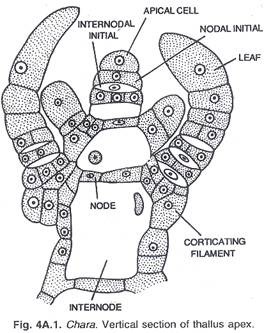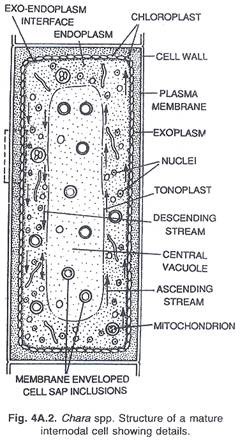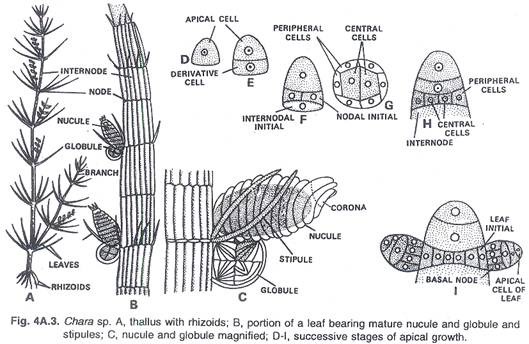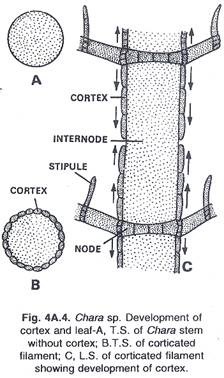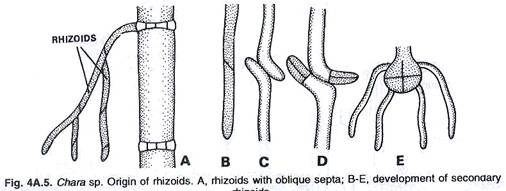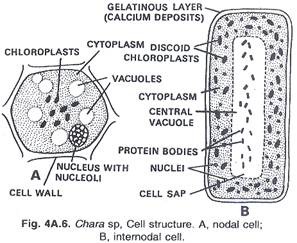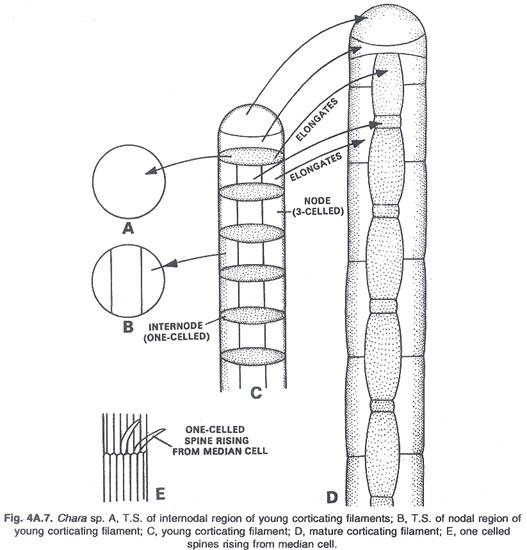The below mentioned article provides an overview on the Isolation and Culture of Protoplast:- 1. Protocol for Isolation and Culture of Protoplast 2. Isolation of Protoplast from Cell Suspension Culture 3. Haploid Protoplast 4. Protoplast from PMC and Pollen Tetral 5. Tests for Viability 6. Wall Formation, Cell Division and Callus Formation 7. Plant Regeneration and Others.
Contents:
- Protocol for Isolation and Culture of Protoplast
- Isolation of Protoplast from Cell Suspension Culture
- Isolation of Haploid Protoplast
- Isolation of Protoplast from PMC and Pollen Tetral
- Tests for Viability of Protoplast
- Wall Formation, Cell Division and Callus Formation
- Plant Regeneration
- Action of Cellulase and Pectinase or Macro Enzyme on Plant Cell
Contents
- 1. Protocol for Isolation and Culture of Protoplast:
- 2. Isolation of Protoplast from Cell Suspension Culture:
- 3. Isolation of Haploid Protoplast:
- 4. Isolation of Protopalst from PMC and Pollen Tetral:
- 5. Tests for Viability of Protoplast:
- 6. Wall Formation, Cell Division and Callus Formation:
- 7. Plant Regeneration:
- 8. Action of Cellulase and Pectinase or Macerozyme on Plant Cell:
1. Protocol for Isolation and Culture of Protoplast:
Protoplasts can be prepared from a variety of tissues but among them leaf mesophyll tissue from a wide range of plants has been proved to be the most ideal source of plant material for protoplast isolation (Fig. 6.5).
Leaves of Nicotiana tabacum is a highly standardised material for easy entry into the art of protoplast isolation and’ culture. Nowadays the mixed enzyme method (single step) is very popular and this procedure is followed as routine work in most of the laboratories of the world.
The protocol for isolation of protoplast from the mesophyll cells of tobacco using mixed enzyme method and its culture are described below:
Isolation of Protoplast:
i. Young fully expanded leaves from the upper part of 7-8 weeks old plants growing in a greenhouse are detached and leaves are washed thoroughly with tap water.
ii. Surface sterilisation of leaves is done by first immersing in 70% ethanol for 60 seconds followed by dipping into 0.4-0.5% sodium hypochlorite solution for 30 minutes. For this purpose, a sterile casserole dish is used as a sterilising container. Sterilisation is done in front of laminar air flow.
iii. After 30 minutes, the sterilant is poured off and leaves are washed aseptically 3-4 times with autoclaved distilled water to remove every trace of hypochlorite.
iv. With the help of long sterilised forceps (8 inches), one leaf is transferred on a sterilised floor tile. The impermeable lower epidermis of the surface sterilised leaves are peeled off as completely as possible. During this process, a sterilised fine jeweler’s forceps is inserted into a junction of the midrib and a lateral vein and the epidermis is carefully peeled away at an angle to the main axis of the leaf.
N.B. Where peeling of the leaf is not possible, slicing of the leaf into thin strips may be sufficient to allow entry of the enzymes through the cut edges of the strip.
v. Peeled leaf pieces are placed lower surface down onto 30 ml sterilised CPW 13M* solution in a 14 cm petridish. When the liquid surface is completely covered with peeled leaf pieces, then the CPW 13M solution is pipetted off from the underside of leaf pieces. The CPW 13M solution is replaced by bacterial filter sterilised solution of enzyme containing 2% cellulase (Onozuka RIO), 0.5% macerozyme in 13% manitol added CPW (pH 5.5).
vi. Leaf pieces in enzyme solution are incubated in the dark at 24-26°C for 16-18 hours.
vii. Without disturbing the digested leaf pieces the enzyme solution is gently replaced by CPW 13M. Then digested leaf pieces are gently agitated and squeezed with sterile fine forceps to facilitate the release of the protoplast. The protoplast suspension is then allowed to pass through a 60µm- 80 µm nylon mesh to remove the larger pieces of undigested tissue.
viii. The filtrate is transferred to screw-capped centrifuge tube and is spinned for 5 minutes at 100 g.
ix. The protoplasts form the pellet. The supernatant is pipetted off and the pellet is re-suspended in CPW 21S solution. It is again centrifuged for 5-7 minutes at 200 g. The viable protoplasts will float at the top surface of CPW 2IS in the form of dark green band while the remaining cells and debris will sink at the bottom of the tube.
x. The viable protoplasts are collected from the surface and are re-suspended again in CPW 13M to remove the sucrose. Centrifugation is repeated two-three times for washing.
xi. Finally, the protoplasts are suspended in measured volume of liquid Nagata and Takebe medium (1971) supplemented with NAA (3 mg/ L), 6-BAP (1 mg/L) and 13% mannitol.
CPW means cell and protoplast washing medium.
The composition of CPW is given below:
2. Isolation of Protoplast from Cell Suspension Culture:
Rapidly growing cell suspension cultures are the most suitable material for protoplast isolation. A new cell suspension does not yield many protoplasts until it has been sub-cultured at least twice. For protoplast isolation, suspension cultures are generally harvested at its early exponential growth phase or log phase.
Older suspension cultures have a tendency to form elongated giant cells with thick wall. So it is very difficult to isolate the protoplast from such culture. Again, the presence of large number of cell aggregates in suspension culture is not desirable for the isolation of protoplast.
Addition of colchicine and some chelating chemicals in suspension culture generally prevents the formation of cell aggregates. Sometimes very low concentration of cellulase (0.1%) is added in cell suspension culture two days before use to discourage the formation of thick wall.
Step 1: Filtering of cell suspension:
The harvested cell suspension is passed through a coarse nylon sieve so that filtrate contains single cells as well as very small cell clumps.
Step 2: Preparation of liquid medium free cells for plasmolysis:
The filtrate is allowed to settle out of the medium. Most of the medium is decanted off and the cells are transferred (by pouring) to a flask. Using the Pasteur pipette, all of the culture medium is removed. This is best achieved by drawing off medium from the base of the cell layer.
Step 3: Pre-Plasmolysis:
The cells arc suspended in CPW13M solution for 1 hour. After 1 hr., the plasmolyticum is pipetted off.
Step 4: Enzyme Incubation:
The enzyme so lution is added to the cells. The flask containing cells and enzyme are placed on the platform of a slowly rotating gyratory shaker (ca 30-40 rpm) for standardised period (4-6 hours).
Step 5: Washing and Purification:
Protoplast suspension is filtered through 60 µm- 100µm stainless steel sieve to remove the larger debris. The filtrate is transferred into centrifuge tubes and is spinned at 80 g for 5-10 minutes so as to sediment the protoplasts and then the supernatant is pipetted off. The pellet is re-suspended in CPW 21S solution.
The protoplast suspension is again spinned at 100 g for 5-7 minutes. Viable and debris-free protoplasts are collected at the surface. The protoplasts are washed with CPW 13M by repeated centrifugation and, finally, protoplasts are re-suspended in measured volume of liquid culture- medium. Finally, the yield of protoplast is measured by counting in hemocytometer.
Sample Protocol-Isolation of Protoplast from Cell Suspension Culture of Daucus carota:
i. Allow the cells to settle out of the medium and remove the supernatant with Pasteur pipette.
ii. Add 20-30 ml of enzyme solution (Onozuka RIO cellulase-2% and hemicellulase-1% in 10% mannitol added CPW solution, pH 5.5) and incubate the cells at room temperature on the platform of slowly rotating gyratory shaker (30 rpm) for 4 hours.
iii. Filter protoplast suspension through 67 µm stainless steel sieve and transfer the filtrate in centrifuged tube. Spin at 80 g for 5 min.
iv. Discard in supernatant and re-suspend in CPW 21S. Spin 100 g for 5-7 minutes.
v. Collect the protoplast from the surface of CPW 21S solution.
vi. Wash the protoplast with CPW 13M solution by repeated centrifugation (3-4 times).
vii. Finally, transfer the protoplast to a measured volume of liquid B5 medium supplemented with 2, 4-D (lmg/L), kinetin (2mg/l) and casein hydrolysate (1 gm/l).
3. Isolation of Haploid Protoplast:
Pollen mother cell (PMC), pollen tetrad (PT) and mature pollen are the natural source of haploid cells. Since they are produced in large number in anther and is very easy to squeeze out from anther, they are suitable material for the isolation of protoplast. Egg cell is also haploid cell, but generally single egg cell is produced per ovule and is very difficult to separate from complex tissue integration.
Isolation and yield of protoplast from haploid male cells depends upon the composition of cell wall. The cell wall of PMC and PT is made up of callose (un-branched 1-3 glucan) whereas the exine of mature pollen is coated with sporopollenins which is very difficult to digest by enzymes.
The freshly isolated protoplast from mature pollen tends to fuse spontaneously to form multinucleate giant protoplast. Therefore, isolation and culture of protoplast have yielded only limited success. Better preparation of protoplasts is obtained from pollen mother cell or pollen tetrad than the mature pollen.
The isolated protoplast from haploid cell is known as haploid protoplast or gametoplast. Isolation and culture of haploid protoplast are useful for the induction mutation and to study the effect of irradiation as well as chemical mutagens.
4. Isolation of Protopalst from PMC and Pollen Tetral:
To ascertain the presence of PMC and PT in anther in relation to flower bud size, the anthers are smeared with 2% acetocarmine before using them. Like leaf mesophyll tissue and cell suspension culture, the isolation of haploid protoplast is also multistep process.
Approximately, the anticipated size of anther containing PMC and PT are aseptically removed with fine forceps. , The content of this anther are squeezed out with the help of glass spatula. The pollen mother cell and the pollen tetrad comes out as a milky fluid. It is treated with 0.75-1% helicase enzyme in 8-10% sucrose for about 30-45 minutes.
Helicase is obtained from snail gut. Sometimes Zymolase, an enzyme isolated from Arthobactor luteus is used for the isolation of protoplast from pollen tetrad. After incubation enzyme is carefully replaced by 10% sucrose and the protoplasts are allowed to settle. Protoplasts are rinsed by conventional washing medium. Finally, protoplasts are cultured in either liquid or solid medium.
(i) Culture of Protoplast:
Isolated protoplast can be cultured in several ways of which agar embedding technique in small petridish is commonly followed. In this technique, protoplast suspension is mixed with equal volume of melted 1.6% ‘Difco’ agarified medium (37°C) and the protoplast-agar mixture are poured into small petridish.
In petridishes, embedding of protoplasts in solid agar medium is known as plating of protoplasts. The plated protoplast can be handled very easily and the agar medium provides a good support to the protoplast. In situ developmental stages of embedded protoplast can be studied under compound microscope. Besides this, separated clones derived from individual protoplast can be monitored.
The method is described below:
i. The protoplasts in liquid NT medium are counted with the help of hemocytometer. The protoplast density is adjusted to 1 x 105 to 2 x 105 protoplast/ml.
ii. Agar solidified (1.6% ‘Difco’ agar) NT medium is melted.
iii. The tight lid of Falcon plastic petridish (35 mm diameter 5 mm thickness) is opened and 1.5 ml of protoplast suspension is taken. To this equal aliquot of melted agar medium is added when it cools down at 37°C to 40°C (Fig. 6.6).
iv. The protoplast-agar medium mixture uniformly throughout the dish.
v. The medium is allowed to solidify, petridish is then inverted.
vi. The culture is incubated at 25°C with 500 lux illumination (16 hours light) initially.
vii. The cultures are sub-cultured periodically in the same solid medium (0.8% agar) with gradually reducing mannitol.
Several other methods have been described for the culture of protoplasts, such as droplet culture, co-culture, feeder layer, hanging droplets and immobilised/bead culture.
(ii) Droplet Culture:
Suspending protoplasts in liquid culture media are placed on petridishes in the form of droplets (Fig. 6.7) with the help of micropipette. This method enables the subsequent microscopic examination of protoplast development. In this method, cultured protoplasts clump together at the centre of droplets.
(iii) Co-culture:
Sometimes a reliable fast-growing protoplast is mixed in varying ratio with the less fast- growing protoplast. The mixed protoplasts are plated in solid medium as described previously. The fast-growing protoplast presumably provides some growth factors which induces the growth and development of the desirable protoplasts. This is known as co-culture technique.
(iv) Feeder Layer Technique:
Fast-growing protoplasts are sometimes made mitotically blocked protoplast by low doses (1-2 Krad) of X-ray treatment. Such irradiated protoplasts are plated with agar medium. Upon this thin solidified layer of irradiated protoplast, desirable protoplasts are again plated at a low density with agar medium. As a result, it makes two agar layers containing irradiated protoplast in lower layer and desirable protoplast in upper layer. The lower irradiated protoplast is known as feeder layer which improves the growth and development of normal protoplasts even at lower density (Fig. 6.7).
(v) Hanging Droplet Method:
Culture of protoplasts in an inverted liquid droplet (0.25-0.50 µl) is known as hanging droplet method. Each droplet contains very small group of protoplasts. A number of droplets are generally placed on the inner surface of the lid of a petridish. Very thin layer of water is generally kept on the lower part of the petridish to make a humid condition inside the petridish as well as to prevent the desiccation of the droplets.
This technique facilitates observation the development of protoplasts under microscope. Protoplasts also get better aeration as they go down to the hanging surface of the droplets. For solid medium, 1.6% or 0.8% agar is added.
(vi) Bead Culture:
Sometimes protoplast suspensions are mixed with several polymer like alginate, carrageenan etc. as well as melted standard Difco agar. Small beads are made by dripping the mixture into liquid medium.
After that, beads in liquid medium are put on moving shaker, h trapped protoplasts culture have shown several advantage over static liquid culture or slowly moving liquid culture where the protoplast suffers the mechanical breakage. This technique increases the mechanical stability, aeration and viability with biochemical activity.
5. Tests for Viability of Protoplast:
Viability of protoplasts after isolation and during culture in liquid medium is very important. Cell wall formation, cell division, callus formation etc. depend upon the viability of protoplast.
The most frequently used staining methods for assessing protoplast viability are fluorescein diacetate (FDA), phenosafranine. FDA dissolved in 5.0 mg/ml acetone is added to the protoplast culture at 0.01% final concentration. The chlorophyll from broken protoplasts fluoresces red. Therefore, the percentage of viable protoplasts in a preparation can be easily calculated.
Phenosafranin, also used at a final concentration of 0.01%, is specific for dead protoplast. As soon as the stain is mixed with protoplast preparation, the inviable protoplasts stain red and viable protoplasts remain unstained.
6. Wall Formation, Cell Division and Callus Formation:
The viable protoplast in culture regenerates its own wall around them. Once the wall is formed, the protoplast becomes essentially a regenerated cell. Depending upon the species, the protoplast remains in naked condition hardly for 10 minutes or a day.
Generally protoplast begins to deposit cellulose micro-fibril immediately after washing and enzyme removal. Cell membrane of newly isolated protoplast contain protruding microtubules that function in the orientation of newly synthesised cellulose micro-fibrils. The rate and regularity of cell wall regeneration depend on the plant species and the state of differentiation of the donor cell used for protoplast isolation.
Calcafluor White (CFW) is the most commonly used stain to detect the onset of cell wall regeneration. CFW binds to the linked glucosides in the newly synthesised cell wall. Optimum staining is achieved when 0.1ml of protoplasts is mixed with 5.0 µ of a 0.1% v/v solution CFW. Cell wall synthesis is observed by a ring of white fluorescence around the plasma membrane.
Cell wall regeneration is prerequisite for nuclear and cell division. After the formation of cell wall, the walled cells expand and divide into two cells. At this stage it looks like ‘8’. Cell division stages can also be stained using CFW.
In most of cases, first cell division usually takes place with 2-7 days of culture. After the first division, each daughter cell divides into two cells. Repeated division results in the formation of cell clump or cell aggregates. All the cells derived from the protoplasts do not divide and form the cell colonies.
Therefore, the percentage of cells which give rises to cell colonies, are known as plating (colony forming) efficiency. Several factors such as genotype of the donor plant, culture medium, hormones as well as physical factors are important for the division of protoplast and callus formation.
The small callus mass can be handled in the conventional manner which means that it’ can be sub-cultured at regular interval and can be used for organogenesis. For sub-culturing, the plate containing dividing protoplasts are sliced into several agar blocks. Each block is transferred to the surface of fresh medium. The plasmolyticum level in the culture medium is progressively reduced to zero by repeated sub-culturing.
7. Plant Regeneration:
The ultimate objective in protoplast culture is the reconstruction of plant from the single protoplast. The strategy for plant regeneration has been to recover rapidly growing callus from protoplasts and to transfer the callus to a species-specific regeneration medium (Fig. 6.8).
It is generally noted that plant regeneration occurs very easily in some plant species while others are recalcitrant. Plant regeneration from protoplast-derived callus tissue has been reported mainly from solanaceous species. It includes 17 Nicotiana species, 6 Petunia species and 6 Solanum species.
In recent years, the list of non-solanaceous species capable of plant regeneration from protoplasts has been steadily expanding. The list contains several species monocot and dicot including carrot, endive, cassava, alfalfa, millet, clover, rapeseed, asparagus, cabbage, citrus etc.
8. Action of Cellulase and Pectinase or Macerozyme on Plant Cell:
Cellulose is a fundamental component of the plant cell wall. It is straight chain polymeric molecule composed of 10,000 or more D-glucose units bound together with β(1→4) glycosidic links. The β(1→4) linkage of cellulose axe hydrolysed by cellulase enzyme complex.
This enzyme attacks the polymeric chain of cellulose at random on the β(1→4) linkage. The cellulose molecule is reduced sequentially to cellodextrins, cellobiose and, eventually, to glucose molecule.
Pectin is a polysaccharide substance present in the middle lamella of the cell walls of all plant tissues which functions as an intercellular cementing material. It is a straight chain molecule consisting of about 100 D- galactouronic acid residues bound together by α (1→4) linkage.
This linear sequence of D- galactouronic acid is interrupted with (1→2) L- rhamnose residues. Hydrolysis of the α (1→4) linkage of pectin is catalysed by the pectinase or macerozyme enzyme complex. Therefore, pectinase or macerozyme, by complete or partial hydrolysis of pectin, loses the cell mass from tissue and exposes the cellulosic layer to cellulase enzyme for further action.
